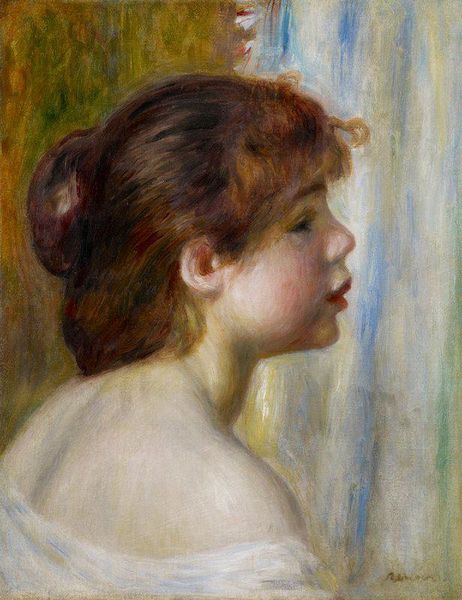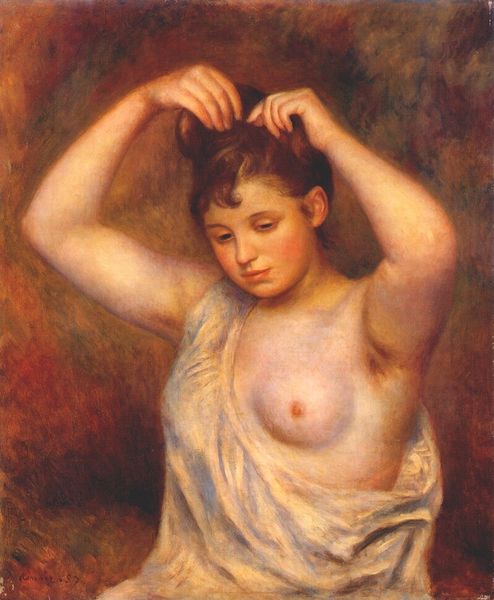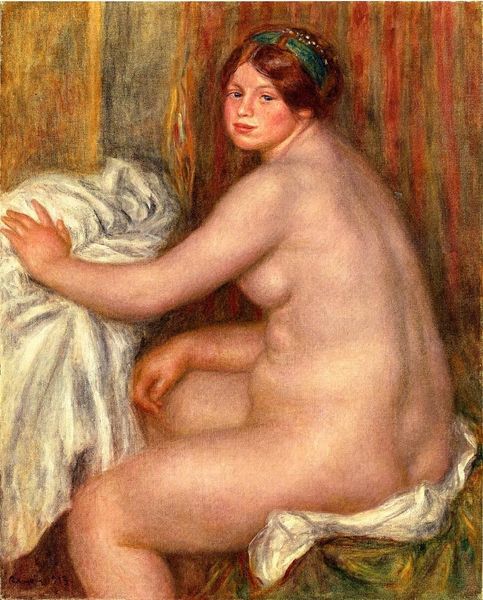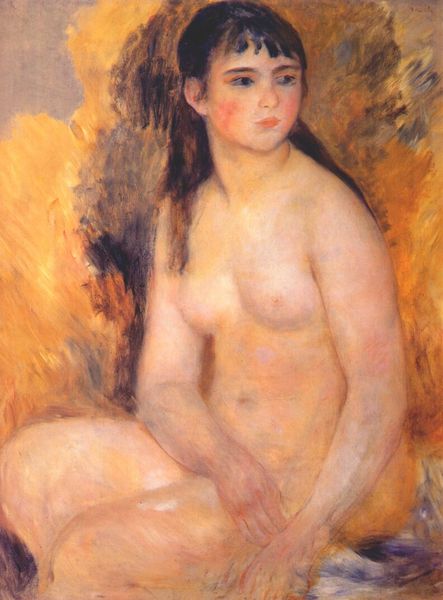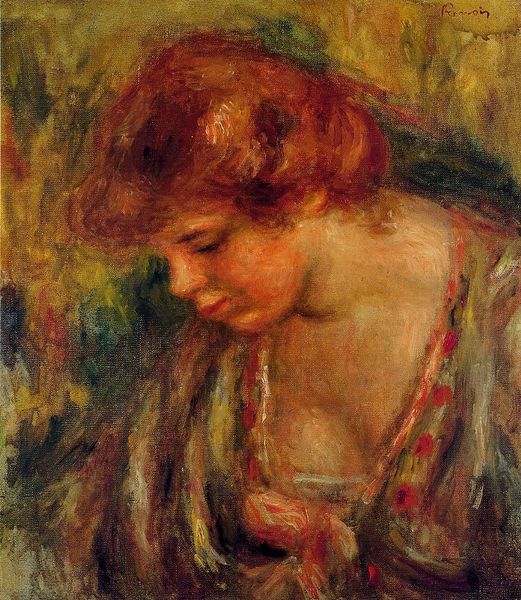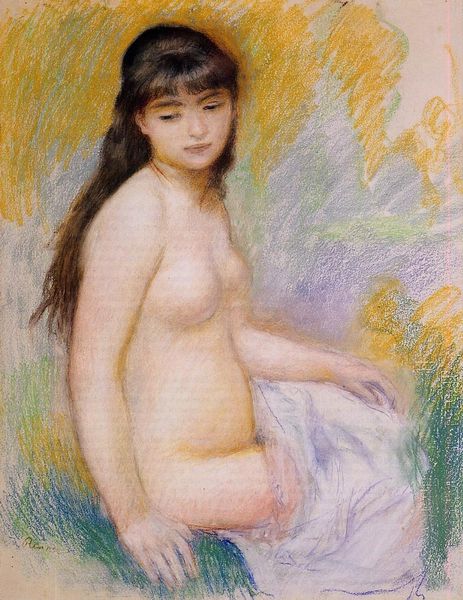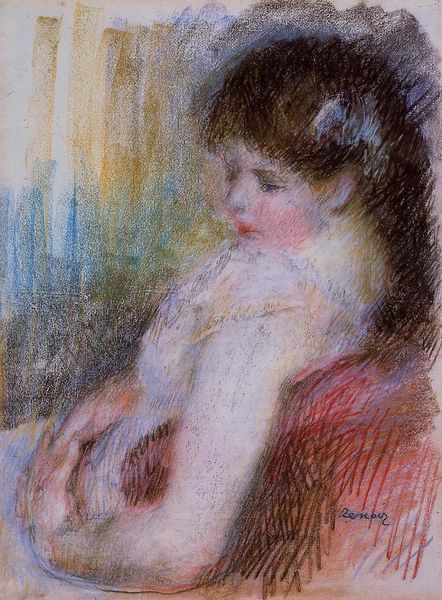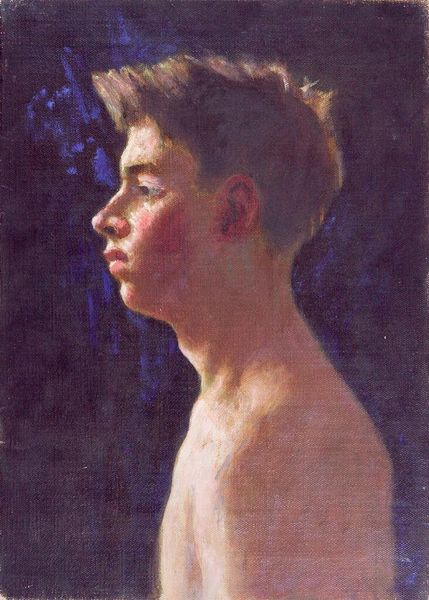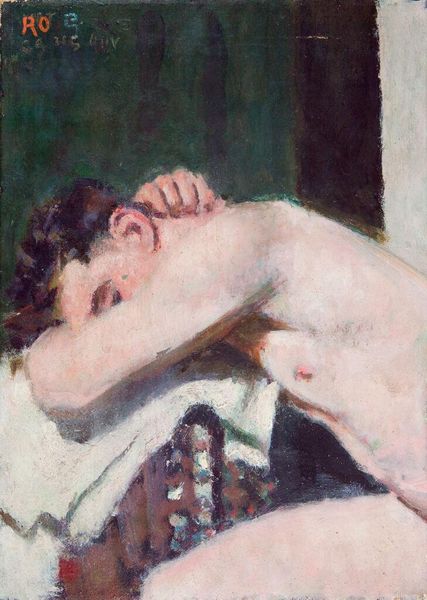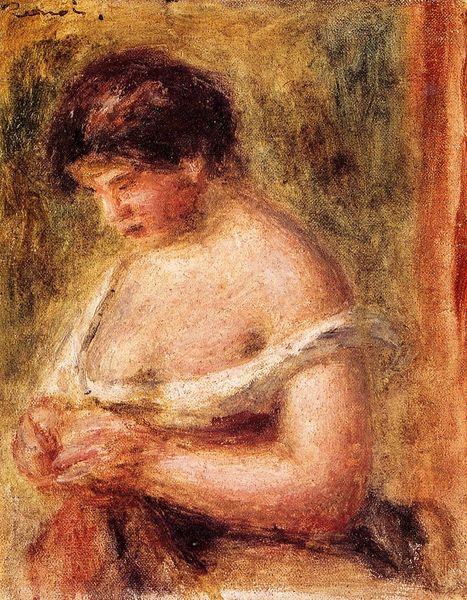
Dimensions: 60.64 x 47.31 cm
Copyright: Public domain
Curator: "Nude Arranging Her Hair," crafted in 1885 by Pierre-Auguste Renoir. He employed pastel on paper to capture this intimate moment. What strikes you initially? Editor: It feels almost unfinished, fleeting. The colors, the loose strokes... It’s very intimate. The texture of the pastel gives the skin a soft glow, almost like it’s lit from within. Curator: The pose invites discussions of how women are represented—or represent themselves. It feels personal, private... but it's also intended for public consumption, and for the male gaze. How do you reconcile that? Editor: I’m immediately drawn to the composition, the way the arms create these strong diagonals that frame the figure’s face. There's also the color harmony: the ochre, the greens contrasting the pink flush on the face... Curator: You mentioned color. It's typical of Renoir. Those hues—they weren't always appreciated. We have to remember that during the Impressionist period, academic painting prized smooth surfaces, detailed rendering and carefully gradated tonal modelling to appear like reality—Renoir went in the other direction, favoring more vibrant palettes and a looser application to convey subjective perceptions of fleeting moments and modern urban life. What statements did such artistic freedom carry, socially and politically? Editor: I suppose he was using a sensualist aesthetic—light and color to capture fleeting sensory experiences... the essence of the everyday and the beauty in a quickly passing modern world—the fleeting experience is the thing in itself, in essence. Curator: It invites discourse around female representation during that era, and our own biases when perceiving these pieces. Beyond artistic technique, it really underscores issues of power, representation, and how women's bodies are objectified in art—what are your final impressions now? Editor: The pastel feels simultaneously grounded and ethereal... that balance makes it truly mesmerizing, despite all the weighty matters we've brought up! Curator: I agree. It prompts reflection on these complexities and contributes to understanding societal narratives.
Comments
No comments
Be the first to comment and join the conversation on the ultimate creative platform.
